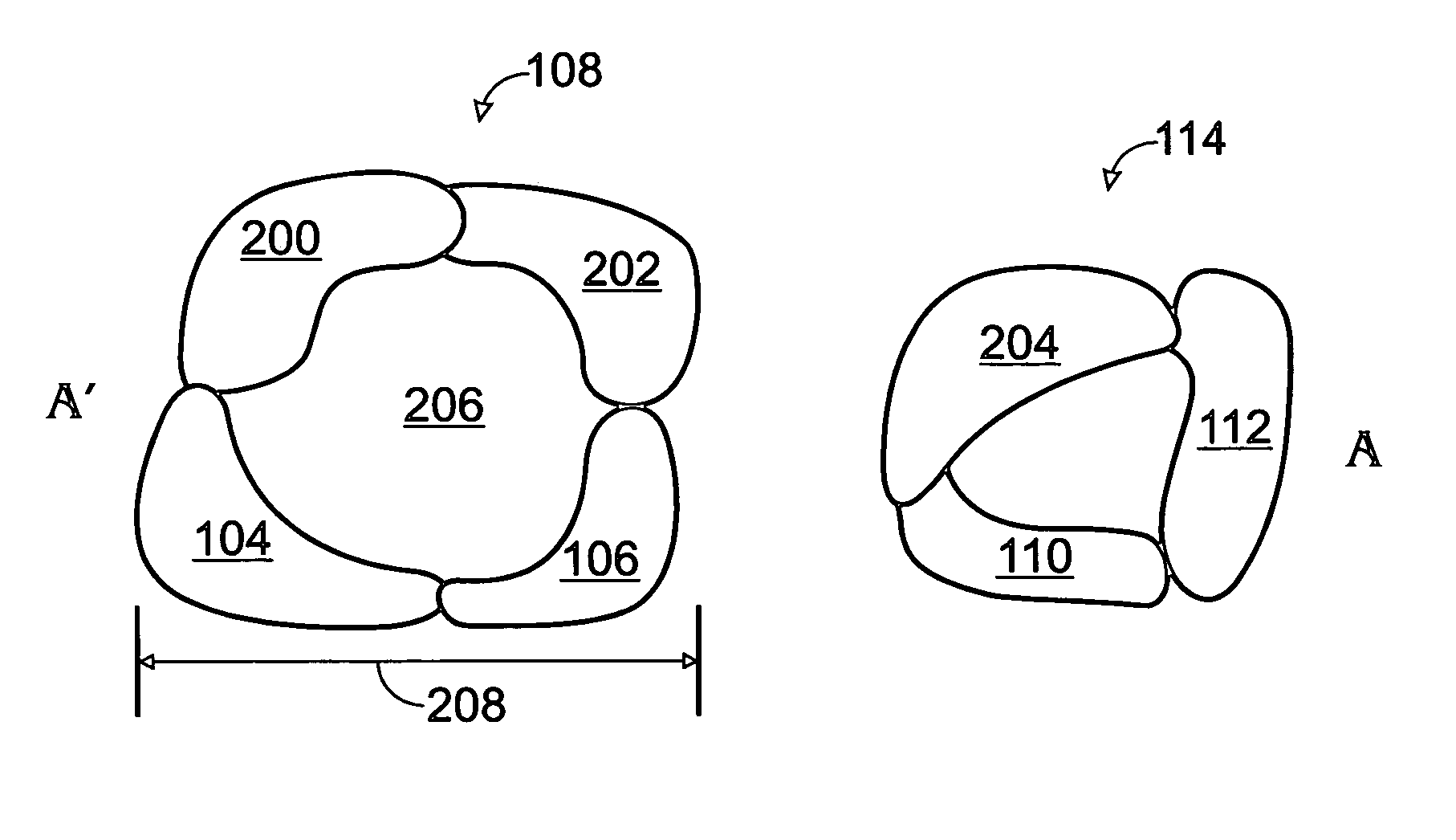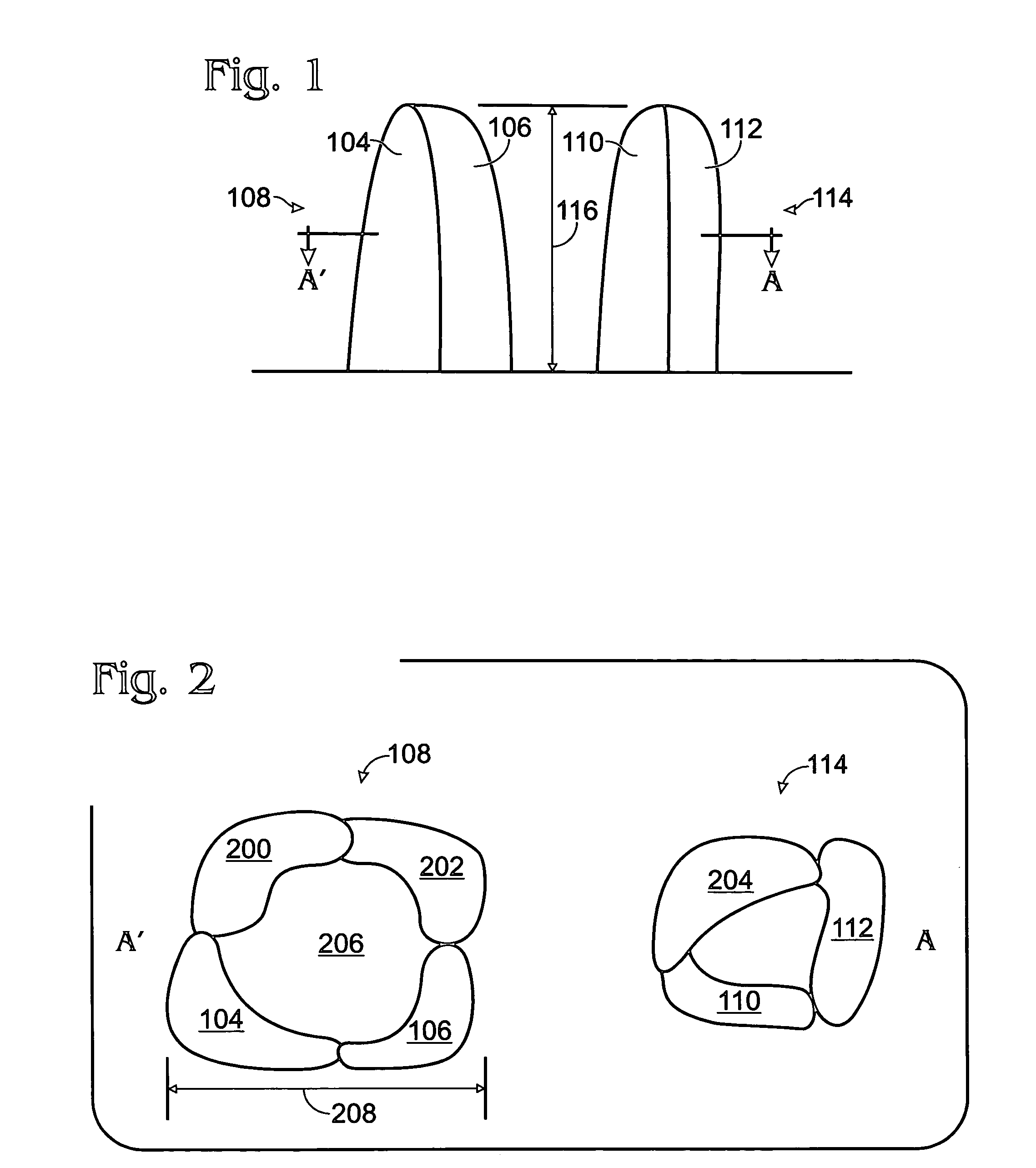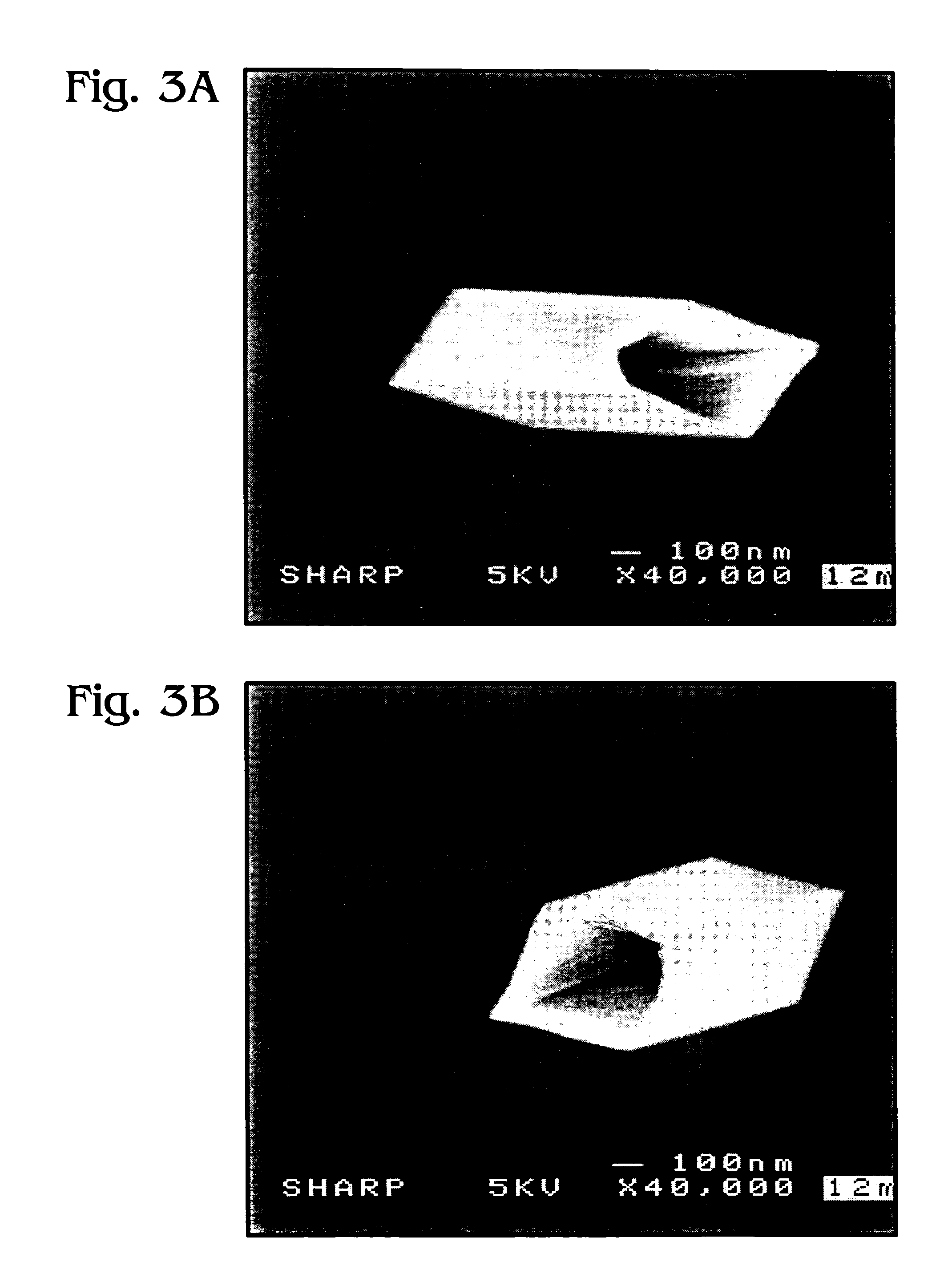Iridium oxide nanotubes and method for forming same
a technology of iridium oxide nanotubes and nanotubes, which is applied in the direction of nanotechnology, crystal growth process, polycrystalline material growth, etc., can solve the problems of no process that is able to create metallic nanowires without the use of porous materials or templates, and the process is complicated and the use of templates adds a considerable degree of complexity
- Summary
- Abstract
- Description
- Claims
- Application Information
AI Technical Summary
Benefits of technology
Problems solved by technology
Method used
Image
Examples
Embodiment Construction
[0021]FIG. 1 is a partial cross-sectional side view of an iridium oxide (IrOx) nanotube. The value of “x” may be 2, in which case the Ir is completely oxidized, to values approaching zero, in which case the Ir is incompletely oxidized. The nanotube comprises a plurality of clustered IrOx nanotips with joined ends 102. Shown are nanotips 104 and 106, forming part of nanotube 108. Nanotips 110 and 112 form part of nanotube 114. The nanotip ends are joined to form an IrOx hollow nanotube (see FIG. 2). The nanotubes 108 and 104 may have a length 116 that varies in the range of 500 Å to 2 microns. In one aspect, the nanotubes has a polycrystalline structure and a (101) orientation. Note, the length of adjacent nanotubes need not necessarily be uniform. Rather, the lengths of adjacent nanotubes may vary.
[0022]FIG. 2 is a partial cross-sectional plan view of the nanotubes of FIG. 1. In this view, it can be seen that nanotube 108 is additionally formed from nanotips 200 and 202. Nanotube 11...
PUM
| Property | Measurement | Unit |
|---|---|---|
| pressure | aaaaa | aaaaa |
| pressure | aaaaa | aaaaa |
| diameter | aaaaa | aaaaa |
Abstract
Description
Claims
Application Information
 Login to View More
Login to View More - R&D
- Intellectual Property
- Life Sciences
- Materials
- Tech Scout
- Unparalleled Data Quality
- Higher Quality Content
- 60% Fewer Hallucinations
Browse by: Latest US Patents, China's latest patents, Technical Efficacy Thesaurus, Application Domain, Technology Topic, Popular Technical Reports.
© 2025 PatSnap. All rights reserved.Legal|Privacy policy|Modern Slavery Act Transparency Statement|Sitemap|About US| Contact US: help@patsnap.com



